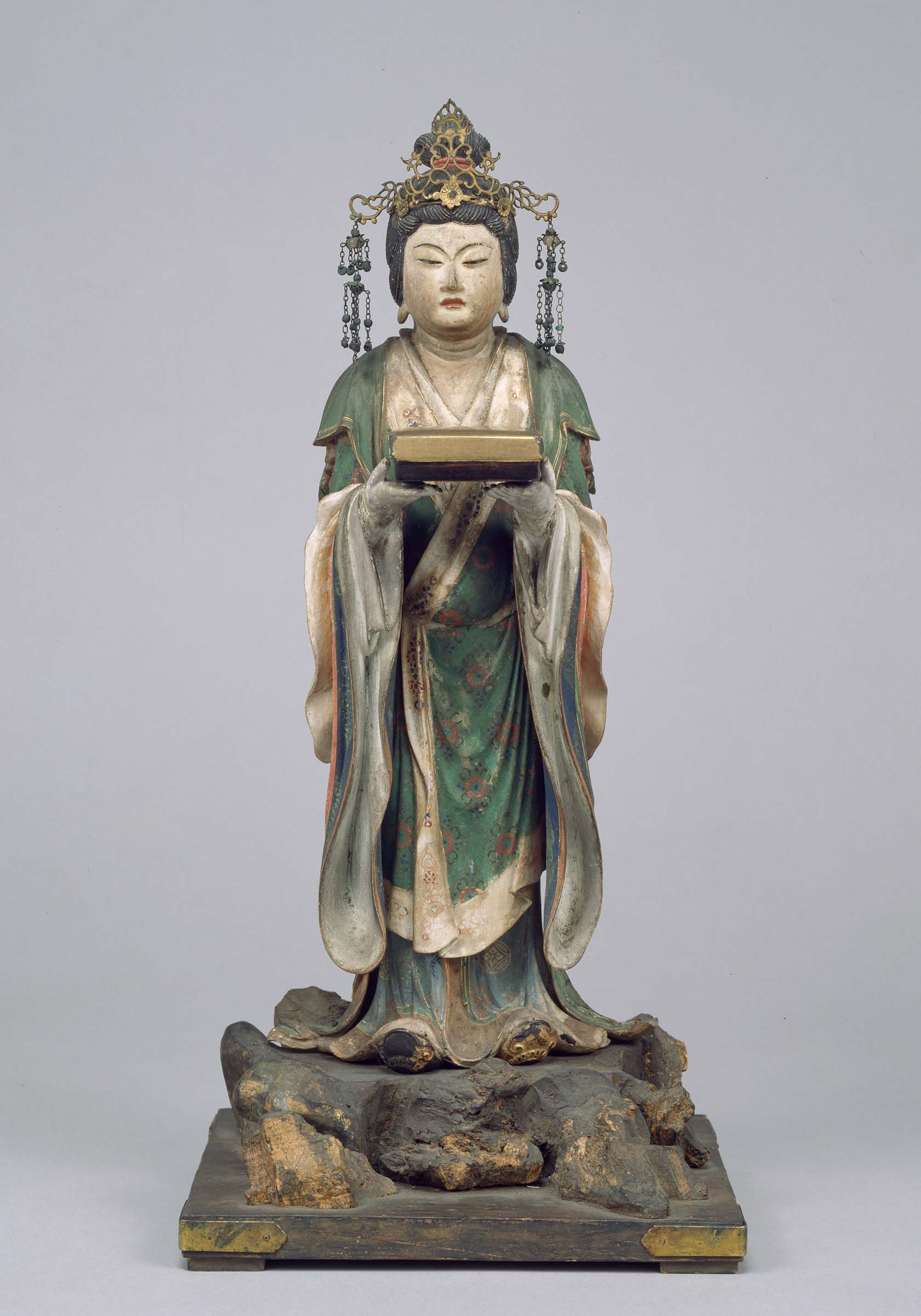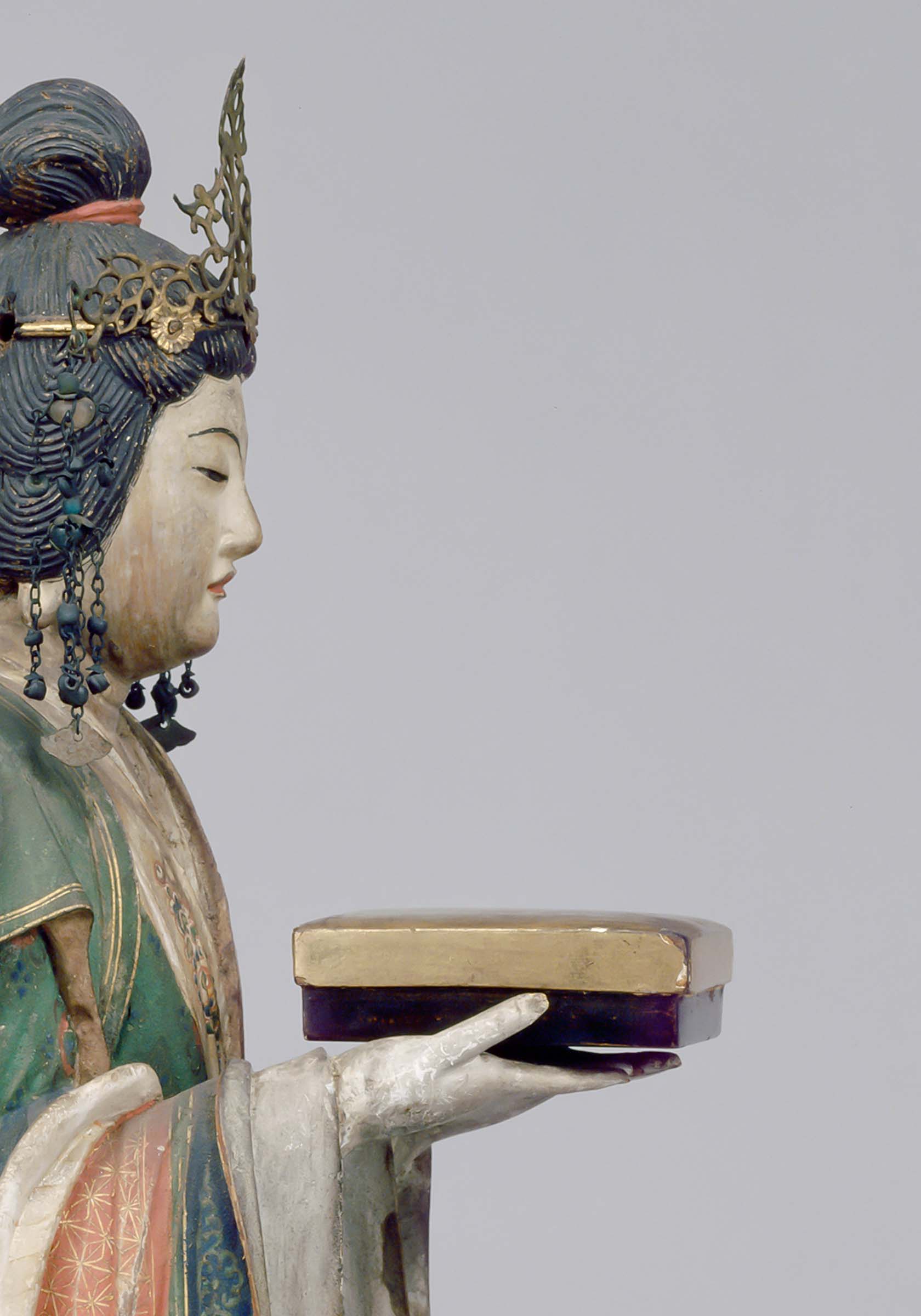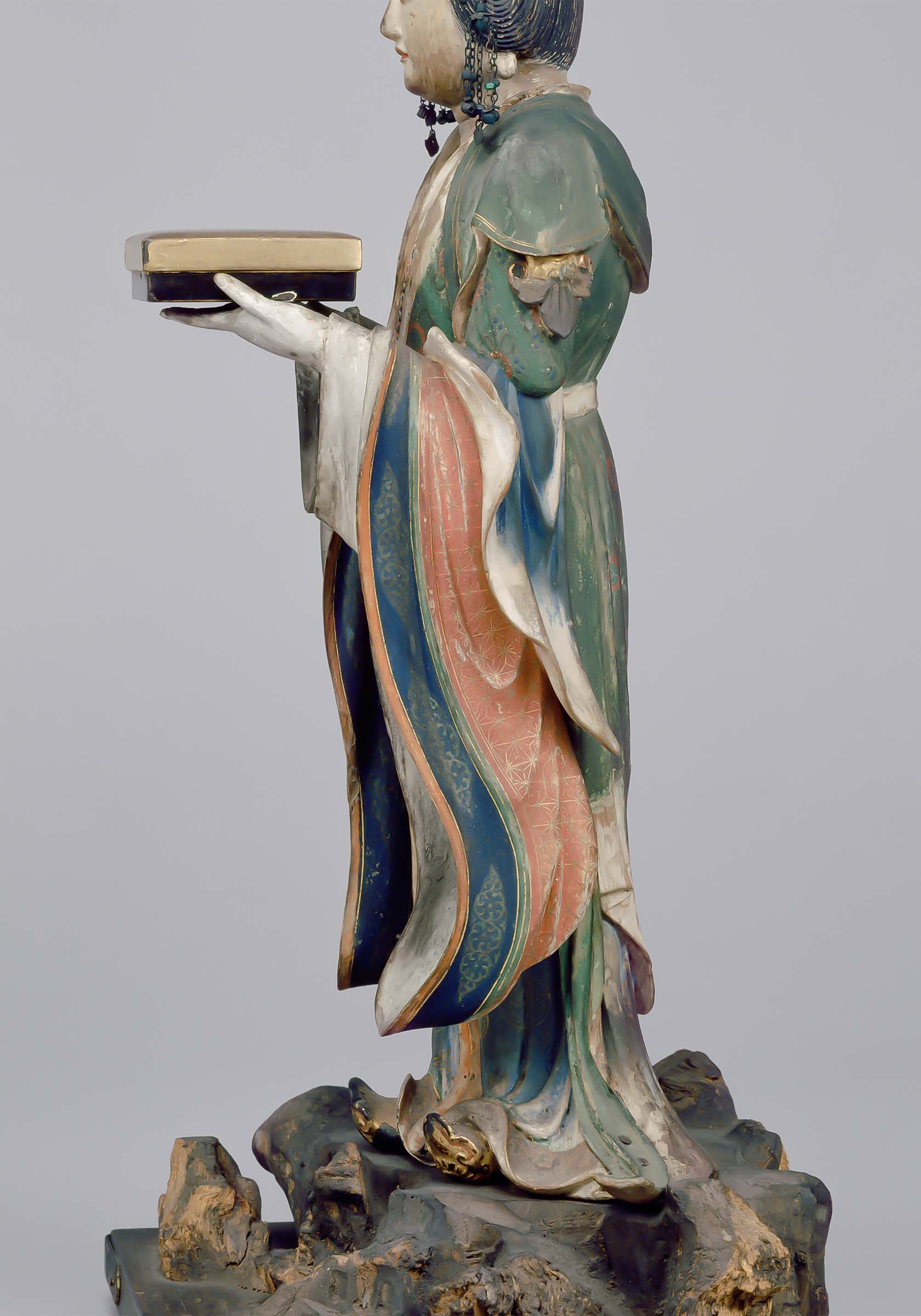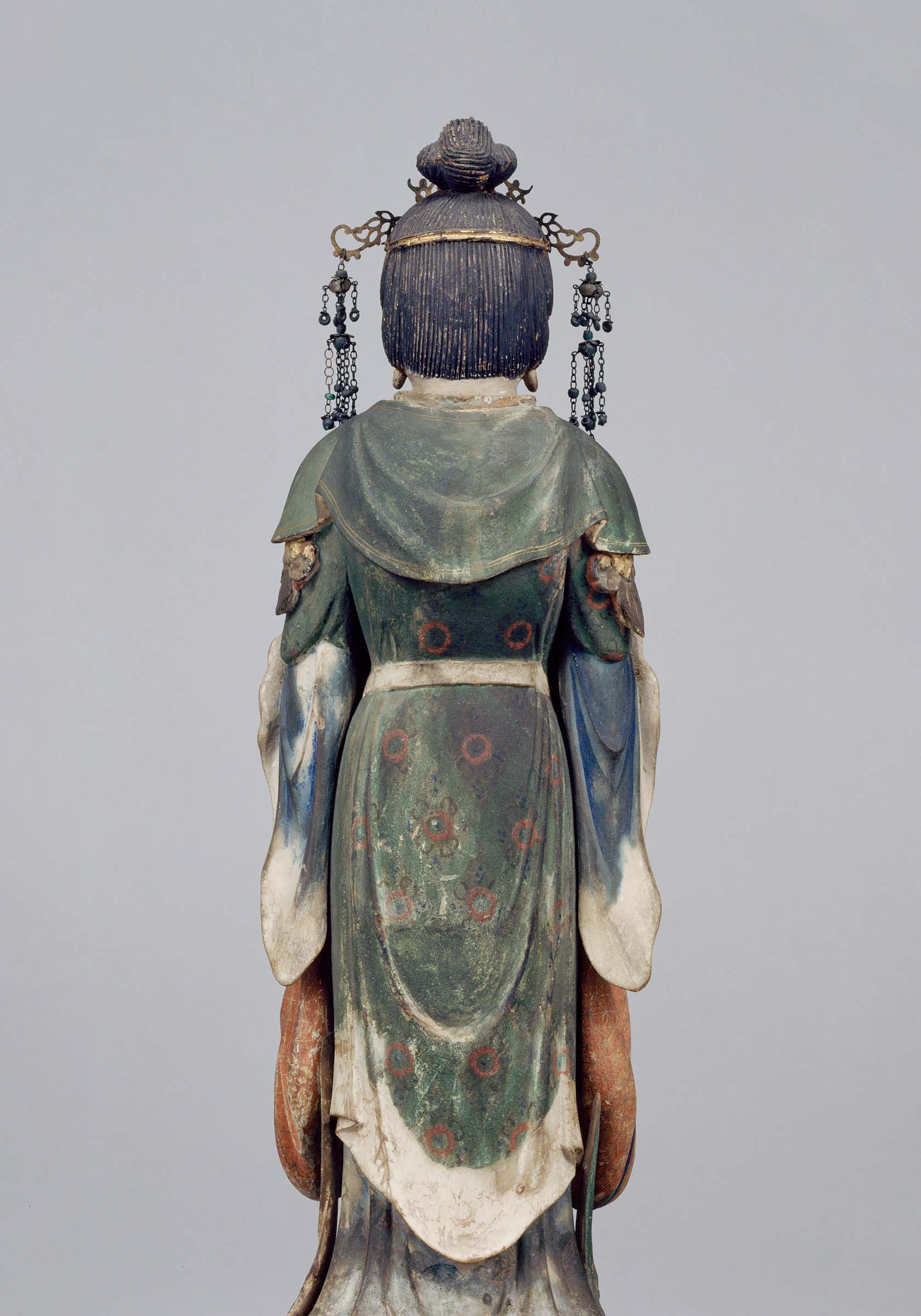Zenmyoshin is a protective deity in the Kegon (Chinese: Huayan; Flower Garland) school of Buddhism. According to legend, a Chinese woman called Zenmyo (Chinese: Shanmiao) fell in love with Gisho (Korean: Uisang), the monk who introduced Kegon teachings to Korea. He could not reciprocate her feelings, but before he left China to sail back to Korea he asked Zenmyo to embrace Buddhism, and her faith was awakened. She then turned into a dragon that protected Gisho’s ship and ensured his safe return to Korea.
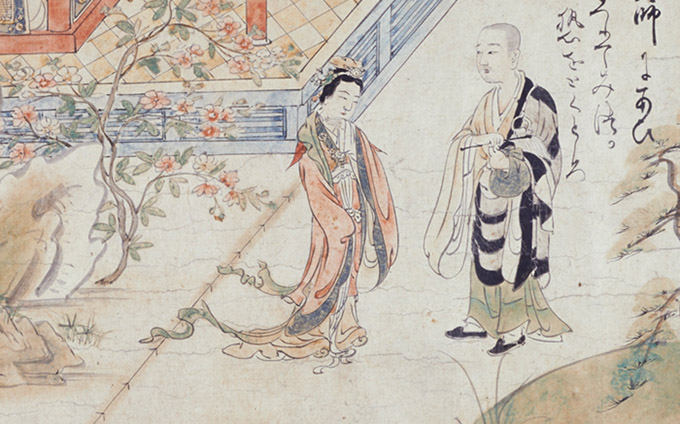
Zenmyo
Gisho
Priest Engyo, founder of Silla Huayan sect (625-702).
Myoe established Zenmyoji, a temple dedicated to Zenmyo, as a nunnery for women whose husbands had died in battle in the early thirteenth century. This miniature statue of Zenmyoshin was enshrined at Kosanji in 1225.
Myoe
Born in 1173 in present-day Yuasa, Aridagawa Town, Wakayama Prefecture, Myoe rejuvenated the Huayan sect. After becoming a priest under Mongaku at Jingoji Temple. He studied Kegon Buddhism at Todaiji Temple and received the secret teachings from Konen at Kajuji Temple. He was awarded the land of Togano by Retired Emperor Gotoba in 1206 and built Kosanji Temple as the center of the Huayan sect. He died in 1232.
Zenmyoji
Convent founded near Kosanji by Myoe Shonin.


